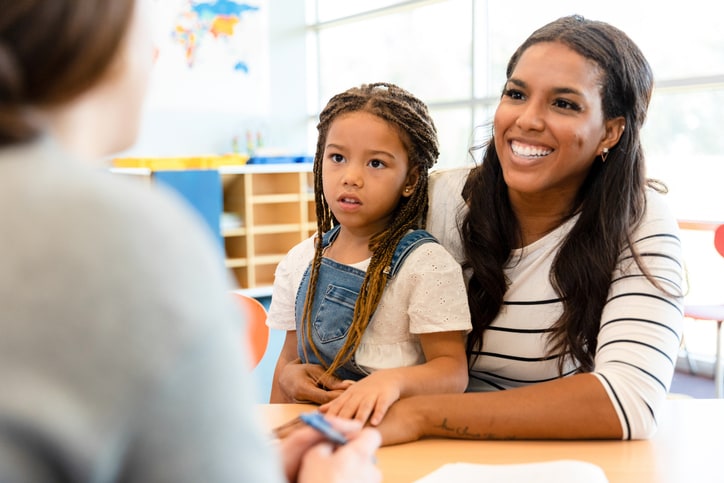In this article
Being a primary caregiver for older adults or adults with disabilities is a big job that can come in more than one form.
“A primary caregiver provides care to a person in need themselves,” explains Dr. Gerda Maissel, a board-certified physical medicine and rehabilitation physician, private patient advocate and founder of My MD Advisor. “They may be hired to do so as a ‘formal caregiver’ or they may be a family member or friend who provides care as an ‘informal or family caregiver.’”
Whether you’re a professional or caring family member or friend, being a primary caregiver comes with big responsibilities (as well as rewards.) Here, experts offer insight on what it means to be a primary caregiver.
What is a primary caregiver?
In a nutshell, a primary caregiver is a person who manages the daily and weekly care of an older adult or an adult with a disability. It can be a family member, often referred to as an informal or family caregiver, or a formal, paid professional caregiver.
“The role reflects the specific needs of the individual and carries responsibility for providing personal care with compassion,” explains Claire Mauro, a professional caregiver of over 20 years and co-author of the book For Grief’s Sake: The Resilient Caregiver Caring and Coping Well. “They may assist with the everyday activities of daily living [ADLs], such as bathing, dressing and eating. Beyond the basic needs, a primary caregiver attends to the tasks of care while supporting the adult’s participation in their own care.”
Primary caregivers often step in as needed to provide additional support or management of the activities required for living independently as an adult, notes Mauro. “These may include monitoring and addressing medications needs, food preparation and household cleaning, providing transportation and attending to finances,” she notes, adding: “The care partnership that evolves supports the adult’s physical and emotional quality of life.”
Put another way: Primary caregiver duties aren’t static and may require more or less of you; however, the whole of the goal is the same — to provide support where needed.
“Managing care may involve both the physical needs of the individual and the emotional, relational needs for both you as a caregiver and for the care recipient.”
— Claire Mauro, professional caregiver and author
What do primary caregivers do?
No two caregiving roles are the same, but here are a few things you can expect to do as a primary caregiver, according to Maissel:
- Provide companionship.
- Light housekeeping.
- Meal prep.
- Help pay bills on time.
- Hands-on caregiving, such as bathing, dressing, toileting and range of motion exercises.
If you’re a family caregiver, Mauro explains, the role may expand in scope beyond the basics.
“Managing care may involve both the physical needs of the individual and the emotional, relational needs for both you as a caregiver and for the care recipient,” notes Mauro. “Caregiving for a family member is most often a voluntary labor of love, but it may also be interpreted as an expectation, an obligation or a necessity.”
Primary vs. secondary caregiver: what’s the difference?
Secondary caregivers are a supportive part of the caregiving system, and similar to primary caregivers, they can be formal, paid professionals or family members, friends or others. They’re, in essence, “one step back from the primary caregiver,” notes Maissel.
“Primary caregivers on call at close quarters may find the demands of the role escalate at critical moments or over time,” Mauro explains. “Being prepared to call on trusted auxiliary caregivers to step in is often part of a care plan, so the primary caregiver can rest and attend to their personal needs and responsibilities, knowing their care partner’s needs are being met.”
Secondary caregivers can also assist the primary caregiver by taking on the additional activities of daily living, Mauro continues. “By providing shopping, cooking, transportation and friendly interactions with the care recipient, secondary caregivers may become essential when care needs extend to a new phase of caregiving.”
Whether they’re formal, paid caregivers or voluntary caregivers, in an ideal set-up, primary and secondary caregivers “cooperate and organize together to utilize the best of each other,” notes Mauro.
What are the benefits of being a primary caregiver?
Being a primary caregiver can be “highly emotionally rewarding,” notes Maissel. “You know you are making a very important difference in someone’s life,” she explains. “Without you, the person in need might suffer.”
Additionally, being the primary caregiver “means getting in on the ground floor,” notes Mauro. “When taking on the tasks of care you are building a routine of care for yourself and the person for whom you’re caring. This can be a very satisfying and rewarding process that respects the abilities of each person, and helps build a sense of enhanced self-worth and purpose.”
“You know you are making a very important difference in someone’s life. Without you, the person in need might suffer.”
— Dr. Gerda Maissel, physician and founder, My MD Advisor
What are the challenges of being a primary caregiver?
Primary caregiving requires a lot of giving, so, without breaks and time to recharge, there’s a good chance for burnout. “It can be exhausting to be a primary caregiver, especially for family members who live with the person in need,” Maissel says. “When that person has dementia, it can be particularly hard to tolerate the repetition and the interruptions. Primary caregivers can feel like they no longer own their lives and have given away all of their energy to the person in need.”
Caring for older adults or adults with disabilities can also be highly fluid, often leading to unexpected situations. “Even with a plan in place for all the phases of care, changes in the caregiving the situation may evolve in unanticipated directions with unexpected new needs,” notes Mauro. “You may feel caught off guard about what’s happening and how the situation is changing faster than you anticipated. You may have arrived at a phase of care you thought was still further ahead.”
That said, she adds, it’s important to keep in mind that “feeling unprepared or overwhelmed, even feeling inadequate, is not a deficiency, it’s an inevitable part of caregiving.”
Where to find support as a primary caregiver
As a caregiver, it’s key you find support. This may come in the form of respite care or a secondary caregiver if you’re the primary. “Having a secondary caregiver comes with benefits for both the person in need, as well as you as the caregiver,” says Mauro. “For instance, you will have more time for the overall decision-making of care.”
If you’re a family caregiver, finding support may also mean hiring a professional. “Turning to paid, skilled caregivers for your loved one doesn’t mean you are surrendering your involvement,” Mauro says. “Getting help with caregiving is a very positive action to take because you will be ensuring you are available at your best when caregiving and that your loved one receives the highest level of care.”
Mauro recommends first exploring local caregiving resources, which can be found through the Family Caregiver Alliance or through the Elder Care Locator.
“Consulting these resources and others may serve to reassure you about your decision to seek help for the challenges of care,” says Mauro.





